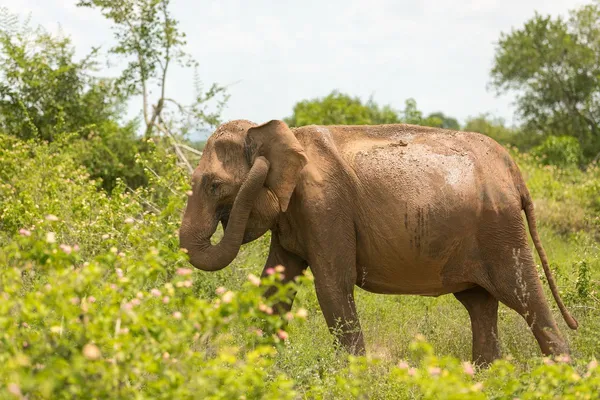Udawalawe National Park
Discover the Wild Wonders

Udawalawe National Park
Udawalawe National Park encompasses an area of hectares 32,315 including the Walawe reservoir comprises of micro habitats such as marshes, the Walawe River and its tributaries, woods, and open grasslands. Udawalawe is known for its extensive areas of thick grass, bushes, and trees. Even though the park is mostly made up of grasslands, scrublands, and other types of plains, mountainous and rocky areas can also be found.
Udawalawe National Park lies on the country’s wet and dry zones which results in relatively dry whether outside of the rainy seasons of October to January and March to May. Left bank of the Uda Walawe Reservoir, lies in the Ratnapura District and its eastern sector on the right bank is in the Monaragala District. The southern boundary is defined by the Uda Walawe – Thanamalvila road. To the south of this road is the Sevanagala sugar plantation. Flora & Fauna Inventory of Udawalawe National Park Udawalawe National Park is home to 184 species of birds (33 of which are migratory), 94 kinds of plants, 21 fish, 12 amphibians, 33 reptiles, 43 mammals, and 135 species of butterflies, in addition to its amazing population of Asian elephants which is one of the best national parks for wildlife tour in Sri Lanka and bird watching tours in Sri Lanka.

Sri Lankan elephants are seeing in open habitats here due to the abundance of open grasslands. The Udawalawe Transit home was established to take care of abandoned elephant calves and being integrating the rescued calves to the wild since 1995. Many other animals such as the rusty spotted cat, Sri Lankan sloth bear, different species of deer, boars etc.
Udawalawe also hosts many endemic bird species such as Sri Lankan super fowl, red faced malkoha, Sri Lankan grey hornbill, brown capped babbler and Sri Lankan jungle fowl with a variety of visiting water birds which create Uda Walawe as a hotspot for wildlife photography tours.

Highlights of Udawalawe National Park
Heard of Sri Lankan elephants can be observed in the afternoon at Udawalawe National Park. At times, multiple elephants or even herds of elephants can be seen at Udawalawe. Near rivers and the Udawalawe reservoir, the chances of seeing a herd of Sri Lankan elephants are particularly high. The dry season in the region is the best time to visit Udawalawe, which falls between the months of May and September. In addition, the neighboring areas of Udawalawe are brimming with additional notable attractions and tourist spots. For example, The Wavulpane Limestone Caves, and the Elephant Transit Home, are all located near the Udawalawe National Park.

